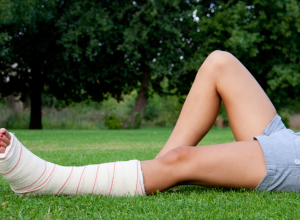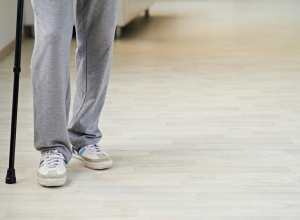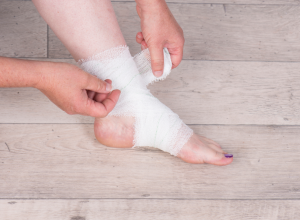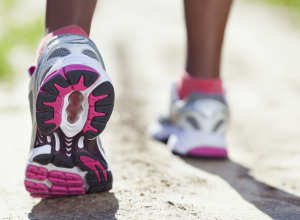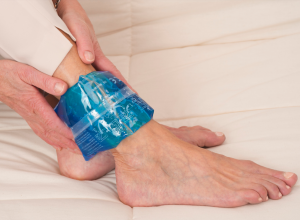
Sprain
A sprain occurs when damage is done to one or more ligaments, which are the bands of tissue that connect one bone to another. Also known as a torn ligament, sprains are often caused by trauma in which the joint is taken beyond its normal range of motion. Sprains can occur at any joint, but the most common places include the wrists, knees and ankles.
Symptoms
Common symptoms of a sprain include severe pain at the joint, bruising, swelling and inflammation, cramping, and difficulty moving and using the affected area. In cases where the ligament ruptures, a popping noise may be heard.
Causes
Sprains occur when a joint is suddenly taken out of its normal range of motion, often during sports, accidents, or physical activity. Examples include a fall, twist or blow to the body. They can also occur from overuse, as muscle fatigue increases your chances of developing a sprain.
Suddenly increasing activity levels without warming up or gradually working up to the level of activity your body is ready for are also causes of torn ligaments.
Treatment
There are three types of sprains, increasing in severity.
- First Degree Sprain
First degree sprains are characterized by stretched but intact ligaments.
- Second Degree Sprain
Second degree sprains are characterized by tears in the ligaments.
- Third Degree Sprain
Third degree sprains are characterized by a complete rupture of the ligament and in some cases, the ligament detaches from the bone.
Additionally, there are two types of ankle sprains:
- Eversion sprains
Sprains in which the ankle rolls outward.
- Inversion sprains
Sprains in which the ankle rolls inward.
Minor sprains can be treated at home with the RICE method: rest, ice, compression, elevation. This will not completely stop the swelling and pain, but it will help the body as it begins to heal the sprained area. Special exercises are often recommended, as the joint should be moved and flexed within a couple of days to avoid further problems and chronic pain. Prolonged immobilization could lead to joint stiffness and muscle atrophy.
Orthopaedic surgery may be needed for more serious sprains, especially those in which the ligaments are severely torn or ruptured. Seek immediate help if your pain is severe, you are unable to bear weight on an injured leg, you’re unable to move the affected area or if you develop redness or red streaks at the joint, which may signify an infection.
Prevention
The best way to avoid sprains is by wearing proper footwear for whatever activity you’re engaging in and warming up before exercising and other activities. Warming up increases blood flow in the body, which makes your muscles and joints more flexible and resistant to injuries.
Notice concerning medical entries:
Articles having medical content shall serve exclusively for the purpose of general information. Such articles are not suitable for any (self-) diagnosis and treatment of individual illnesses and medical indications. In particular, they cannot substitute for the examination, advice, or treatment by a licensed physician or pharmacist. No replies to any individual questions shall be effected through the articles.





